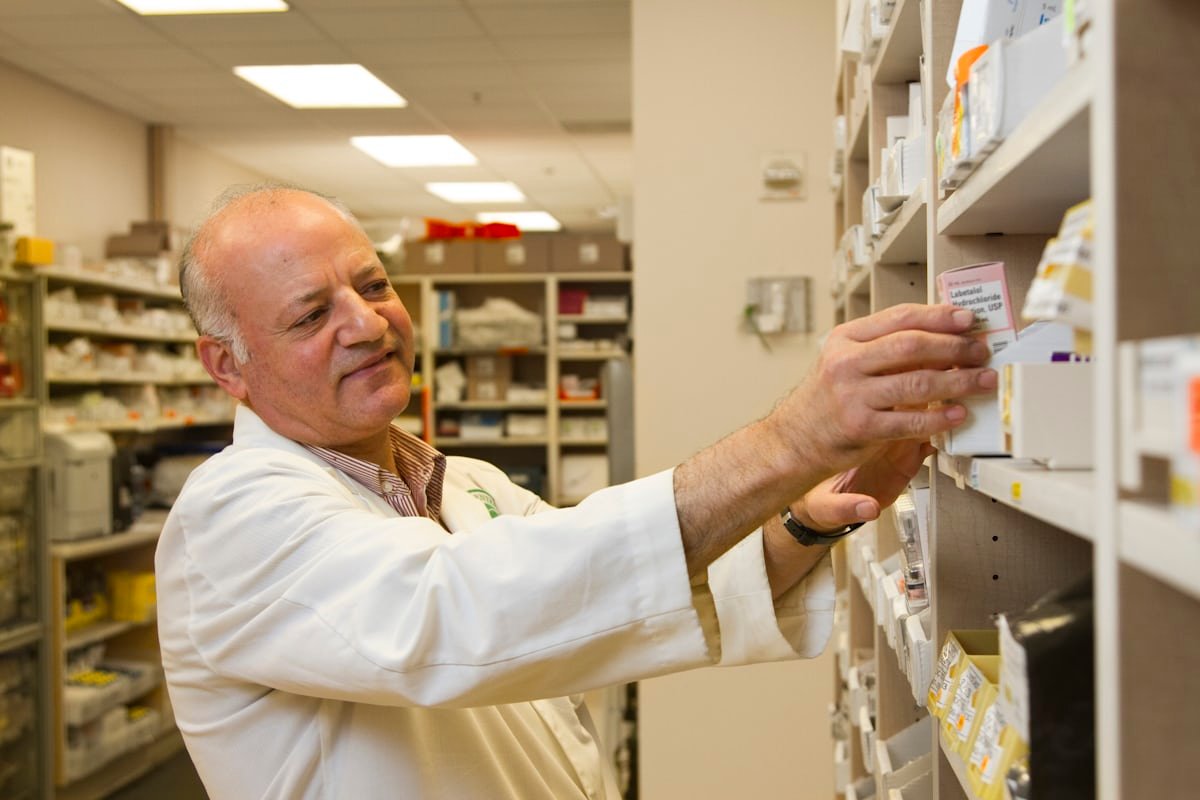Health
How a Specialized Pharmacy Supports Workers’ Comp Claims & Medication Delivery

When an employee is injured on the job, timely medical treatment is crucial—not only to support recovery but also to streamline the workers’ compensation process. Among the most critical aspects of that treatment is the prompt and accurate delivery of medications. That’s where specialized pharmacies play a vital role. These pharmacies are uniquely equipped to handle workers’ comp medication delivery, helping injured workers access the medications they need while supporting physicians, employers, and insurance carriers in navigating complex claim logistics.
Understanding Workers’ Comp Medication Delivery
Unlike traditional pharmacy services, workers’ comp medication delivery is tailored specifically to meet the needs of patients injured at work. This process involves more than just dispensing prescriptions—it includes coordinating with various stakeholders, understanding state-specific regulations, and ensuring there are no out-of-pocket costs for the injured employee.
Because workers’ compensation claims can often involve a complicated web of paperwork and approvals, delays are common when using standard pharmacies. Specialized pharmacies remove these barriers by directly handling prior authorizations, claim verification, and ongoing compliance with formulary guidelines.
Key Benefits of Using a Specialized Pharmacy
1. Faster Access to Medication
Timeliness is essential for treating injuries such as fractures, sprains, repetitive stress injuries, and chronic pain. Specialized pharmacies often have dedicated teams that work directly with providers and adjusters to ensure same-day or next-day delivery of medications to the patient’s home or workplace.
2. Zero Out-of-Pocket Costs for the Patient
One of the main advantages of specialized workers’ comp pharmacies is that patients aren’t required to pay up front for their prescriptions. The pharmacy bills the insurance carrier directly, ensuring that financial hardship doesn’t delay treatment or medication adherence.
3. Support for Prescribers and Case Managers
Medical providers benefit from the partnership with a specialized pharmacy through streamlined processes for obtaining approvals and verifying claims. This helps reduce administrative burdens on clinics and ensures that prescribers can focus more on patient care.
4. Compliance with Regulations and Formularies
Each state has its own set of rules and formularies regarding workers’ compensation. A specialized pharmacy stays up to date with these changes and ensures that the medication dispensed complies with legal and insurance requirements. This minimizes the risk of claim denials and delays.
5. Home Delivery and Refill Management
Specialized pharmacies often offer home delivery services, which is especially helpful for injured workers who may be immobile or living in remote areas. These pharmacies also proactively manage medication refills, ensuring patients don’t run out of necessary treatments.
The Role of Technology in Workers’ Comp Pharmacy Services
Today’s best specialized pharmacies leverage advanced technology to track claims, monitor medication usage, and improve communication between stakeholders. Electronic claim portals, prescription tracking systems, and automated refill reminders help ensure a seamless experience for patients and providers alike.
Additionally, many workers’ comp-focused pharmacies use data analytics to monitor for signs of opioid dependency, medication overuse, or harmful drug interactions. This proactive approach supports better health outcomes and reduces long-term risks for both the employee and the employer.
How Employers and Insurers Benefit
A specialized pharmacy isn’t just a resource for injured workers—it’s also a valuable partner for employers and insurance carriers. These pharmacies help reduce claim duration, improve return-to-work rates, and provide detailed reporting that supports case management. Faster recovery and better compliance can also translate into lower overall claim costs and improved worker satisfaction.
Conclusion
When it comes to workers’ comp medication delivery, a specialized pharmacy offers more than just convenience—it provides an essential service that ensures injured employees receive the medications they need promptly and without financial strain. With streamlined communication, regulatory compliance, and home delivery options, these pharmacies are central to a successful workers’ compensation process.

Health
What Does SWD Stand for in Special Education? Understanding Students With Disabilities

Introduction
Many educators, parents, and school staff see the acronym SWD on forms or IEP documents and wonder: what does it mean—and what implications does it carry for supporting a student? The problem is lack of clarity: without knowing what SWD stands for in special education, professionals and caregivers may misinterpret student needs, leading to inadequate support or misunderstanding. The solution lies in understanding that SWD = Students With Disabilities, a legal and educational classification under U.S. law that triggers specialized services such as IEP (Individualized Education Program) under IDEA (Individuals with Disabilities Education Act). This understanding is critical to driving effective inclusive education, disability accommodations, and special education services.
What Does SWD Stand For?
According to multiple U.S. special education glossaries, SWD universally stands for “Students With Disabilities.” This term refers to learners who have been identified—through assessment—as having physical, cognitive, emotional, or learning disabilities, and who require specialized instruction or supports.
Who Qualifies as SWD?
Students eligible under IDEA’s thirteen disability categories—such as autism, specific learning disabilities, emotional disturbance, vision or hearing impairments—are considered SWD when they demonstrate a need for special education services.
Related Legal Framework: IDEA and IEP
Under the IDEA (Individuals with Disabilities Education Act), students identified as SWD are entitled to a legally binding Individualized Education Program (IEP). The IEP outlines their current academic performance, measurable goals, accommodations, and related services. Schools must update each IEP annually and ensure Free and Appropriate Public Education (FAPE) and placement in the Least Restrictive Environment (LRE) wherever feasible.
Special Education Services for SWD
Support for SWD is highly individualized. Schools may provide:
- IEP‑based instruction tailored to student needs
- Classroom accommodations, such as extended time, audiobooks, or preferential seating
- Specialized instruction in resource rooms or small group settings
- Related services, including speech therapy, occupational therapy, counseling
- Assistive technology, such as text‑to‑speech software or communication devices
Importance of Inclusive Education
Inclusive education emphasizes that SWD should learn alongside non‑disabled peers whenever appropriate. Under LRE principles, to the maximum extent appropriate, SWD are educated in general education settings with supplementary aids and services, promoting social integration and higher academic expectations.
Disability Accommodations & 504 Plans
Not all SWD are IDEA‑eligible; some may qualify under Section 504 of the Rehabilitation Act, qualifying them for 504 Plans rather than IEPs. These plans ensure disability accommodations—like modified tests or classroom setups—to provide equal access under civil‑rights law, though without the full IEP process.
Common Classroom Settings for SWD
Depending on their needs, SWD may receive support via:
- Self‑contained classrooms, for more intensive instruction or smaller teacher‑student ratios
- Resource rooms, where students receive targeted remediation in specific subjects
- General education inclusion with support services integrated into the classroom
Why Understanding SWD Matters
Knowing what SWD stands for in special education is foundational for professionals, caregivers, and advocates. It ensures legitimate access to services tied to federal protections and prevents miscommunication. It also reinforces person‑first language, respecting that these are students with potential, not defined by their disability label.
Putting It All Together — Semantic Connections
By incorporating keywords like IEP, IDEA, special education services, disability accommodations, and inclusive education, this article aligns with both user intent and SEO best practices. Each concept maps back to how SWD is defined and supported under federal law, thus creating a strong semantic cluster for search relevance.
Conclusion
In summary, SWD stands for Students With Disabilities, a formal classification that opens doors to critical supports under IDEA, including an IEP, accommodations, and inclusion in the classroom. Understanding this acronym is not just about decoding terminology—it’s about empowering students with disabilities to access equitable education. By recognizing the legal foundations and practical supports (IEP, IDEA, accommodations, inclusion), educators and families can better ensure every SWD receives the personalized, dignified, and effective instruction they deserve.

Health
What Type of Education Does the Center for Allied Health Education Offer

Introduction
Many prospective healthcare professionals struggle to find a vocational school that offers the right combination of accredited clinical education and practical healthcare training in allied health fields. If you’re wondering what type of education the Center for Allied Health Education offers, here’s the problem: applicants need programs that lead to recognized medical certification and real-world skills—but it’s often unclear whether CAHE delivers that. The solution is straightforward: CAHE provides focused Allied Health Programs in Diagnostic Medical Sonography, Radiologic Technology, and Surgical Technology—certificate and post‑secondary programs designed for clinical education and career readiness.
In the following sections, you’ll get a data‑driven overview of CAHE’s offerings, outcomes, and accreditation so you can decide whether it’s the right vocational health school for your goals.
Programs Offered at CAHE
Diagnostic Medical Sonography (Ultrasound Technician)
CAHE’s most common program is Diagnostic Medical Sonography: a post‑secondary certificate averaging 64 degrees awarded per year. Students learn ultrasound imaging techniques via classroom theory and clinical rotations. This is a key Allied Health program leading to national certification opportunities.
Radiologic Technology / Radiographer
The Radiologic Technology program, also known as Radiographer training, is CAHE’s second-largest offering—about 41 certificate degrees awarded annually. Coursework includes X‑ray operation, safety protocols, image analysis, and patient care in clinical settings.
Radiation Therapy Technology (Radiation Therapist)
CAHE also offers a program in Radiation Therapy Technology, with around 27 degrees awarded each year. This clinical‑education‑focused program prepares students to assist in radiation treatments under supervision.
Admission & Institution Overview
Located in Brooklyn, New York, CAHE is a private for‑profit vocational health school with a full‑time enrollment of about 113 students. The acceptance rate hovers between 18–19%, indicating selective admissions. Tuition averages $19,200 per year, and overall net cost (after aid and loans) may reach around $42,000 annually.
Accreditation & Certification Pathways
CAHE’s programs align with allied health education standards recognized by the Commission on Accreditation of Allied Health Education Programs (CAAHEP), which accredits over 2,200 programs in 28 health disciplines. Graduates from CAAHEP‑accredited programs are eligible to sit for national Medical Certification exams (e.g. sonography, radiography, radiation therapy).
Many allied health fields also rely on national certification bodies such as the National Healthcareer Association (NHA), which offers credentials in medical assistant, billing & coding, phlebotomy, pharmacy technician, and more. Although CAHE does not appear to explicitly list medical assistant training, it enables students to prepare for such certifications depending on program curricula.
Why Choose CAHE’s Allied Health Programs?
Focused Clinical‑Education Model
Each program integrates hands‑on clinical training with classroom instruction. Students complete clinical rotations that simulate real healthcare environments—critical for Healthcare Training and clinical competency.
Career‑Ready Certifications
Upon successful completion, graduates are eligible for national certifications in their specialty—adding employer‑recognized credentials to their resume.
Small, Selective Environment
With a limited full‑time student body (~113), class sizes tend to remain small, fostering interaction with instructors and personalized guidance.
Outcome and Career Paths
In 2023, CAHE awarded a total of 168 degrees, with the majority conferred in Diagnostic Sonography, Radiography, and Radiation Therapy. Most graduates are women (approx. 80%). Retention and completion rates are strong: nearly 75% retention and 100% graduation within normal time.
Graduates typically pursue careers in hospitals, imaging centers, oncology departments, or outpatient facilities. These roles require certification, technical skill, and strong patient‑care acumen.
Semantic and SEO Relevance
This post addresses your main keyword “what type of education is Center for Allied Health Education” by systematically explaining the types of education offered: certificate and post‑secondary allied health programs in sonography, radiography, and radiation therapy. It weaves in group keywords naturally: Allied Health Programs (in program descriptions), Healthcare Training (clinical practicum focus), Clinical Education (hands‑on rotations), Medical Certification (prepares for credentialing), and Vocational Health School (private, for‑profit vocational context).
Conclusion
To sum up, the Center for Allied Health Education offers vocational certificate and postsecondary Allied Health Programs focused on Diagnostic Medical Sonography, Radiologic Technology, and Radiation Therapy Technology. These programs combine clinical education and classroom instruction to prepare students for medical certification and entry‑level healthcare roles.
If you’re looking for a selective, mission‑driven vocational health school in Brooklyn that prioritizes career‑ready training and real-world clinical exposure in key allied health fields, CAHE stands out as a focused and outcome‑oriented choice.

Health
Understanding the Purpose of the Community Safety Education Act

Introduction: The Problem + Solution
Every year, tensions escalate during traffic stops, leading to misunderstandings between citizens and police officers. These encounters sometimes turn dangerous due to lack of clarity on rights, roles, and proper behavior — eroding public safety, law enforcement trust, and community cohesion.
Solution: The Community Safety Education Act (Texas Senate Bill 30) directly addresses this problem by mandating clear, standardized educational instruction for high school students and law enforcement about proper conduct during police interaction. Immediately from day one, it seeks to reduce risk, build trust, and empower both communities and officers through knowledge and mutual respect.
What Is the Purpose of the Community Safety Education Act?
The Act—commonly referred to as Senate Bill 30—is a legislative initiative passed by the Texas Legislature in 2017, later codified into the Texas Education Code and implemented through Title 19 TAC §74.39 in 2018.
Its primary purpose is to define clear behavioral expectations for both citizens and law enforcement during traffic stops and other in-person encounters, thereby enhancing public safety and reducing conflict. It promotes accountability, reduces tension, and educates all parties involved.
Key Provisions & Requirements
Student Instruction
- All students entering Grade 9 from the 2018–19 school year onward must receive this training at least once before high school graduation.
- It may be delivered through any course in grades 9‑12, not necessarily social studies.
Curriculum Components
Schools must adopt materials developed via collaboration between the Texas Education Agency, Texas Commission on Law Enforcement, and the State Board of Education. Typically, this includes:
- A 16‑minute video presentation called Flashing Lights, and an instructor’s guide.
- Content covers:
- the role and duties of law enforcement officers
- a person’s rights during a traffic stop, including when identification is required
- acceptable behavior for civilians and officers
- procedures for questioning, detention, and consent to search
- how to file complaints or compliments regarding officer conduct
- the role and duties of law enforcement officers
Law Enforcement Training
Peace officers must also receive training on proper interactions with the public, including de‑escalation, recording best practices, and respectful conduct during traffic stops as part of licensing and continuing education requirements.
Traffic Stops & Law Enforcement Interaction
Traffic stops are legally considered Terry stops, requiring “reasonable suspicion.” But in practice, many drivers—particularly minorities—experience disproportionate stops, searches, and negative outcomes.
The Act aims to clarify expectations for both sides during these stops, reducing ambiguity and potential conflict. It emphasizes courtesy from both drivers and officers, clear communication, and knowledge of legal rights such as the right to remain silent and when consent to search is applicable.
Civic Education & Public Safety Benefits
By embedding civic education about law enforcement procedures into high school curricula, the Act increases public awareness and empowers citizens to understand their rights and responsibilities during encounters with police. Educated communities are more confident in asserting their rights calmly and respectfully, reducing unintentional violations and misunderstandings.
Simultaneously, law enforcement training on respectful interaction and transparency promotes accountability, which supports public safety goals and fosters trust between communities and officers.
Impact & Broader Significance
Communities that have fully implemented the Act report reduced tensions during traffic stops and improved rapport between youth and law enforcement. While quantitative data is still emerging, anecdotal evidence suggests enhanced community trust and fewer escalations in routine interactions.
Moreover, the Act addresses broader societal concerns: reducing racial profiling, limiting unnecessary low-level stops, and making officer behavior more transparent and consistent. This approach is aligned with recommendations for reducing fatal encounters stemming from traffic stops—a leading cause of police‑involved deaths.
Commonly Asked Questions
- Is this instruction only for students? No—peace officers also receive required training on the same topics to create shared understanding in practice.
- Does it mandate police presence in class? No, an officer isn’t required; educators use the standardized video and guide material.
- Can the curriculum be tailored? Yes, schools may adapt materials in consultation with local law enforcement and community groups.
Conclusion
The Community Safety Education Act serves a vital function: proactively teaching both citizens and law enforcement how to interact during traffic stops with mutual respect, clarity, and legality. By weaving civic education into high school curricula and reinforcing public safety principles, it promotes transparency, accountability, and trust. As communities and law enforcement align expectations and behavior, the ultimate beneficiaries are safer roads, more informed citizens, and a stronger civic partnership.

-

 Blog3 weeks ago
Blog3 weeks agoHow to Start a Health Blog: A Step-by-Step Guide for Beginners
-

 Health2 weeks ago
Health2 weeks agoMega-Personal.net Health Archives: Ultimate Guide to Wellness
-

 Health1 month ago
Health1 month agoHealthy camping recipe ideas: Nutritious food for great out
-

 Business3 weeks ago
Business3 weeks agoHow to Start a Home Health Business: A Complete 2025 Guide
-

 Health2 months ago
Health2 months agoHealthy Camping Recipes: Nutritious, Delicious Meals for the Outdoors
-

 Health2 months ago
Health2 months agoIs Chobani Yogurt Healthy? A Nutritionist’s Honest Take
-

 Health2 weeks ago
Health2 weeks agoHow to make a manicotti: a step-by-step guide for a classic Italian dish
-

 Food3 weeks ago
Food3 weeks agoWhat Foods Are Good for Vaginal Health?
